Empowering Teacher Leaders: How Principals Can Foster Collaboration and Confidence in Every Classroom
by Anabel Garza and Megan Tesano
Happy New Year from all of us at TxCEE!
As we head into 2025, we want to spend a few moments focusing on leadership.
Do you have a teacher who has leadership qualities? Have you ever wondered how you can grow them now? Teacher leadership can be a pathway to administration, but doesn’t have to be. Principals who are involved with the CLASS, MS CLASS, and SPARK projects with TxCEE are leveraging Collaborative Learning Leaders (CLLs) and Mentor Teachers to build teacher leadership and self-efficacy.
As teachers move into leadership roles, they often feel nervous and unsure of how their colleagues will respond. Principals can support them through small actions with big results. William Bridges (2009) suggests that managing change can be made more impactful when thinking through the 4 Ps: Purpose, Picture, Plan, and Part.
Purpose
As Simon Sinek (2009) tells us, begin with the Why. Why is this new approach, project, or initiative important to our campus? Which of your campus and district goals does it support? At the beginning of the school year, principals shared how CLASS, MS CLASS, and SPARK support Emergent Bilingual students and foster collaboration among teachers. For example, Principal Lisa Garcia at Roberto Garate Elementary School in Monte Alto ISD shared the CLASS impact on student outcomes with her teachers, highlighting their record growth in reclassifying Emergent Bilingual students as strengthan important outcome of teacher collaboration. Highlighting the impact of their focused collaboration on supporting Emergent Bilingual students clearly articulated their motivation for continued work in this area.
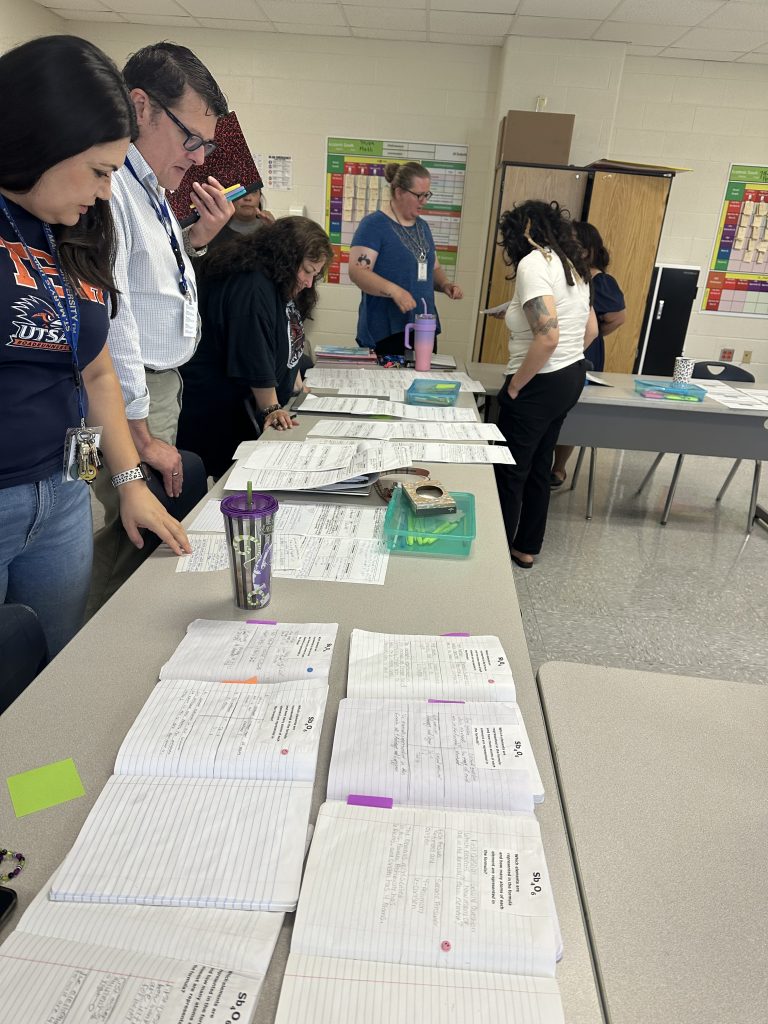
CLC at Zamora MS in South San Antonio ISD reviewing student work and identifying trends for discussing instructional adjustments.
Picture
Bridges (2009) suggests that it is essential for leaders to communicate a clear and straightforward vision for change. In the context of Collaborative Learning Communities (CLCs), guiding questions may include: What does collaboration look like on your campus? Who will be involved? When will it occur? How will you communicate this to the staff? Principal Uriel Uranga at Jack Taylor Elementary in Burleson ISD brings his entire staff together after school to engage in CLCs. He established this practice at the beginning of the 2023-2024 school year and it continues strong into this school year. Mr. Uranga has created a clear vision for the campus that allows all stakeholders to understand the purpose of CLCs.
Plan
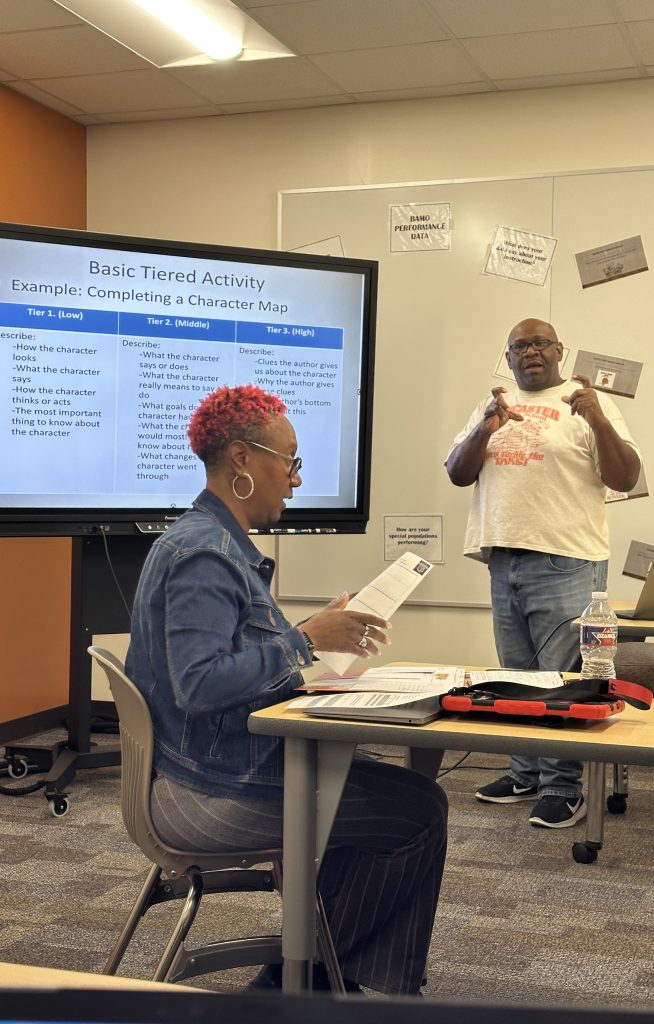
CLL Dwayne Connor leading his CLC in Lancaster ISD
Once educators understand and own the purpose, they need to be able to visualize the system. Principals in Jubilee Academies spent time with their teacher leaders scheduling meetings and identifying topics for discussion. They stayed true to their purpose and selected topics based on data that supported their campus and district goals . Creating a calendar with dates and topics that is shared with the entire staff sets the foundation for implementation. Meeting reminders through weekly newsletters and calendar invites are simple yet impactful ways principals communicate. Teacher leaders no longer have to rely on their power of influence to meet with their teams, , as the implementation plan had been collaboratively developed.
Part
This is where principals empower their teacher leaders. Principal Ellie Gearhart at Lake View University Prep in San Antonio meets with the CLLs to plan upcoming meetings. The teachers own the agenda, develop the content, and facilitate the meetings. Her dedicated time to leader collaboration and presence at the meetings sets the tone, and the teacher leaders take ownership of the rest. Teacher Kimberly Odukoya talks about how her confidence in her own leadership has grown this year as a result of their collaboration.
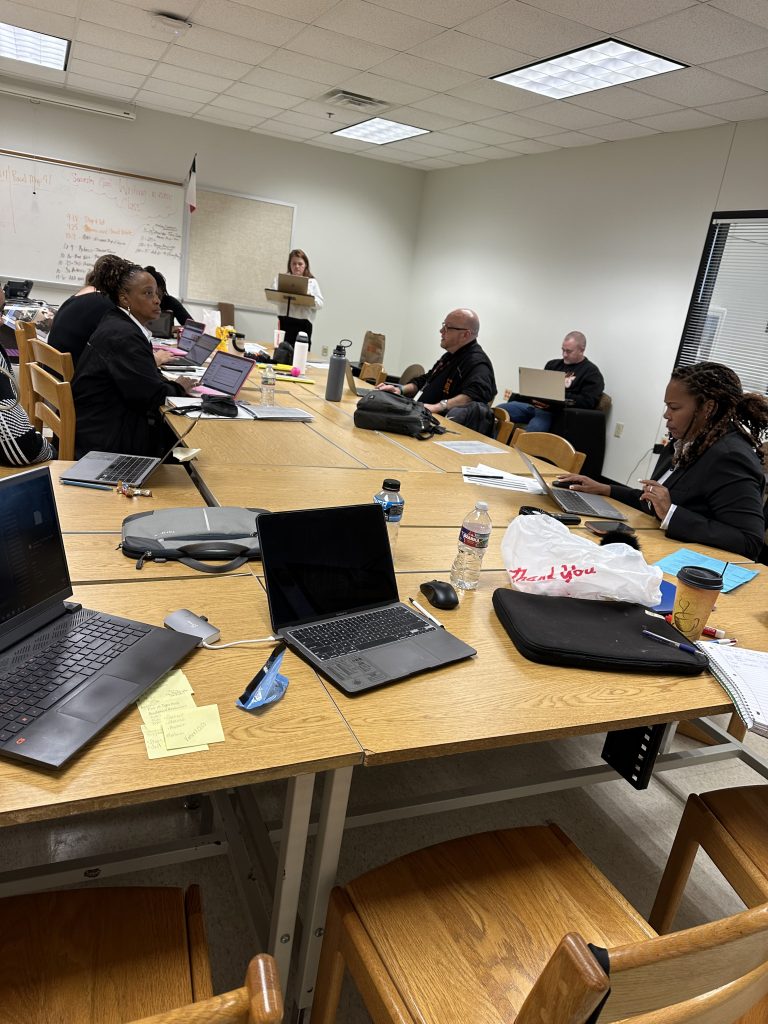
CLLs at Lancaster HS working together to plan appropriate sequence of Roadmaps. The efforts are schoolwide and Principal Jett provided time for all CLLs to meet together for maximum impact on instruction.
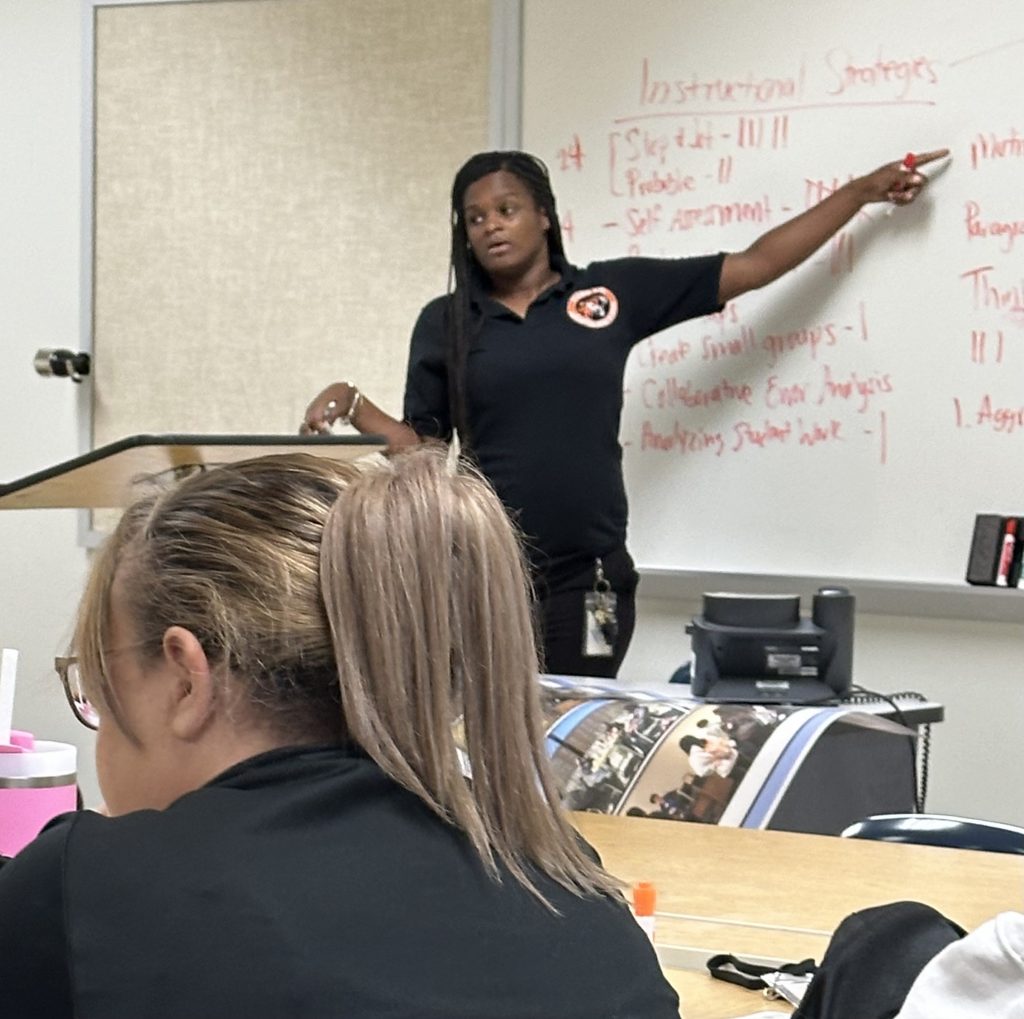
CLL Patrice Williams facilitating the working sessions for the CLLs at Lancaster HS
Principal Kristen Jett of Lancaster High School in Lancaster ISD has strategically used the SPARK grant to foster collaboration and organization among her CLLs. Jett provided dedicated time for all CLLs to come together and plan for the semester, ensuring a cohesive and well-structured leadership model. During this time, the group problem-solved around meeting schedules and collaboratively calendared key instructional strategies that individual CLLs could present during their respective sessions. This intentional planning created a tightly networked group of teacher leaders who could lean on each other for support, not only to enhance their own leadership abilities but also to ensure the effective implementation of student growth strategies across the campus.
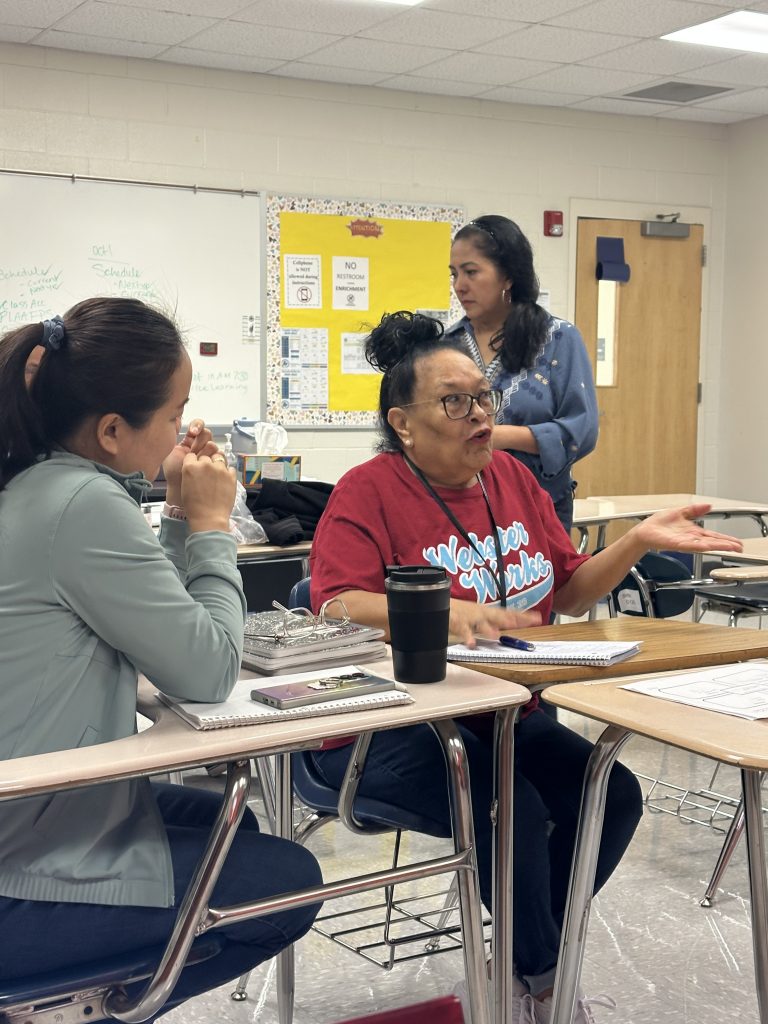
CLC at Zamora MS in South San Antonio ISD. Teachers collaborating during a meeting. Principal Donna Gomez ensures teachers have time to focus on TxCEE strategies.
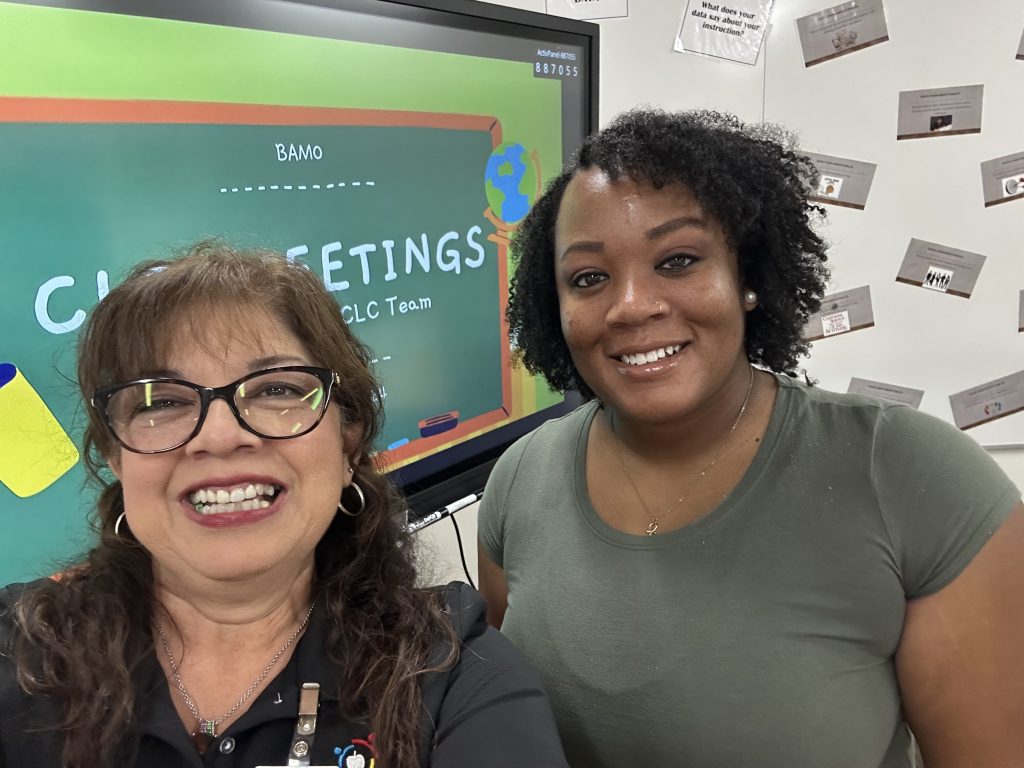
Anabel Garza, TxCee with Brittany Johnson, CLL, Lancaster ISD (BAMO)
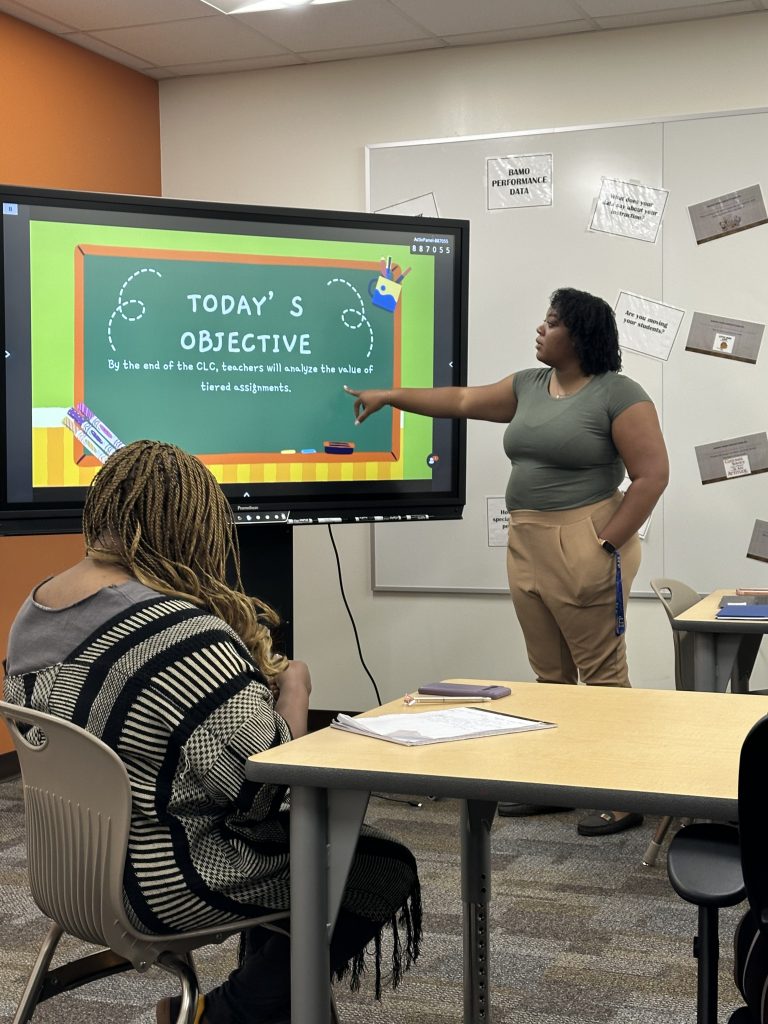
Brittany Johnson, CLL, leading a CLC at Barack and MIchelle Obama 9th grade Center in Lancaster ISD
In South San Antonio ISD, Principal Elizabeth Sandoval of Dwight Middle School is seizing the opportunities offered by the SPARK grant to transform teaching and learning on her campus. Through this grant, focused on developing teacher leaders, Principal Sandoval is empowering her CLLs to work alongside instructional coaches in driving instructional excellence. These teacher leaders are not just supporting their peers, but are actively engaging in professional learning communities to implement common strategies aimed at measuring and improving student growth. By leveraging SPARK’s resources, Principal Sandoval is fostering a collaborative environment where teacher leaders guide their colleagues in refining practices, ultimately leading to enhanced student achievement.
When principals establish the purpose, paint the picture, devise a plan, and allocate the part, teachers develop the confidence to lead their colleagues. As teachers step into this new role and collaboration among teachers grows, campus culture begins to be impacted as well.
If your district is interested in engaging in similar work with collaborative learning communities (CLCs) and mentoring , we are seeking partners for our MS CLASS grant. Middle schools who serve 20% or more EB students are eligible to participate in a one year implementation. For more information, check out our newsletter or sign-up for one of our team to contact you.
By Anabel Garza and Megan Tesano
Citations
Bridges, W. (2009). Managing transitions: Making the most of change. Da Capo Press.Sinek, S. (2009). Start with why: How great leaders inspire everyone to take action. Portfolio.
